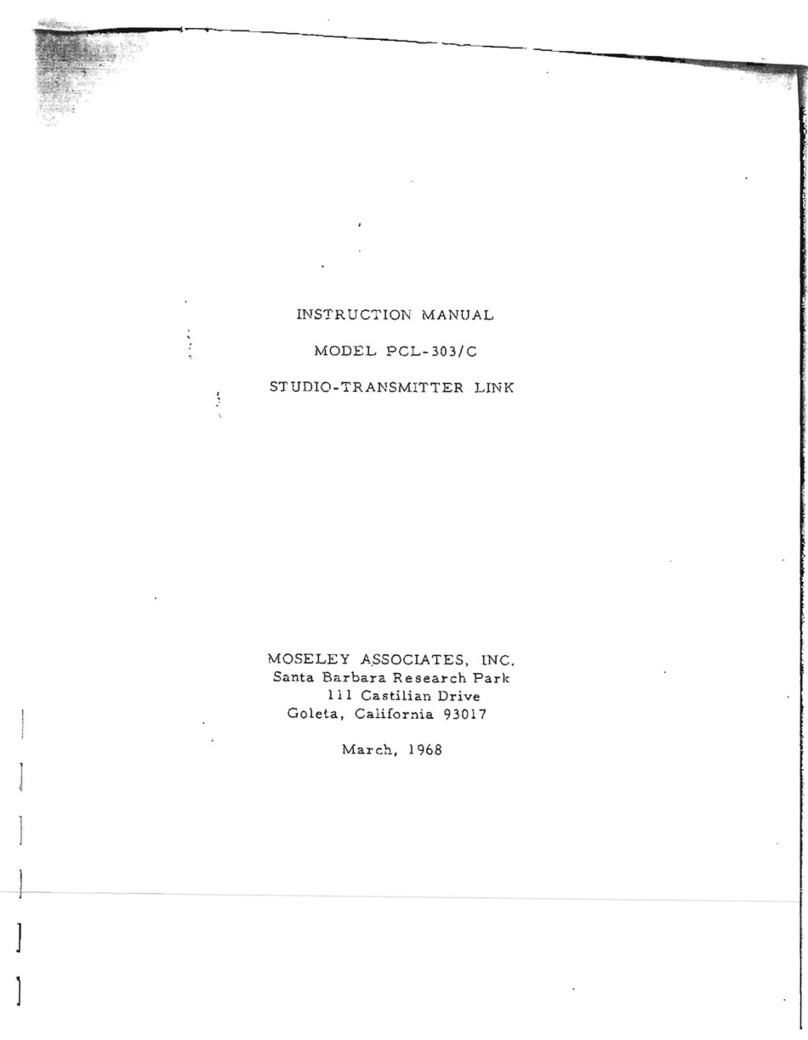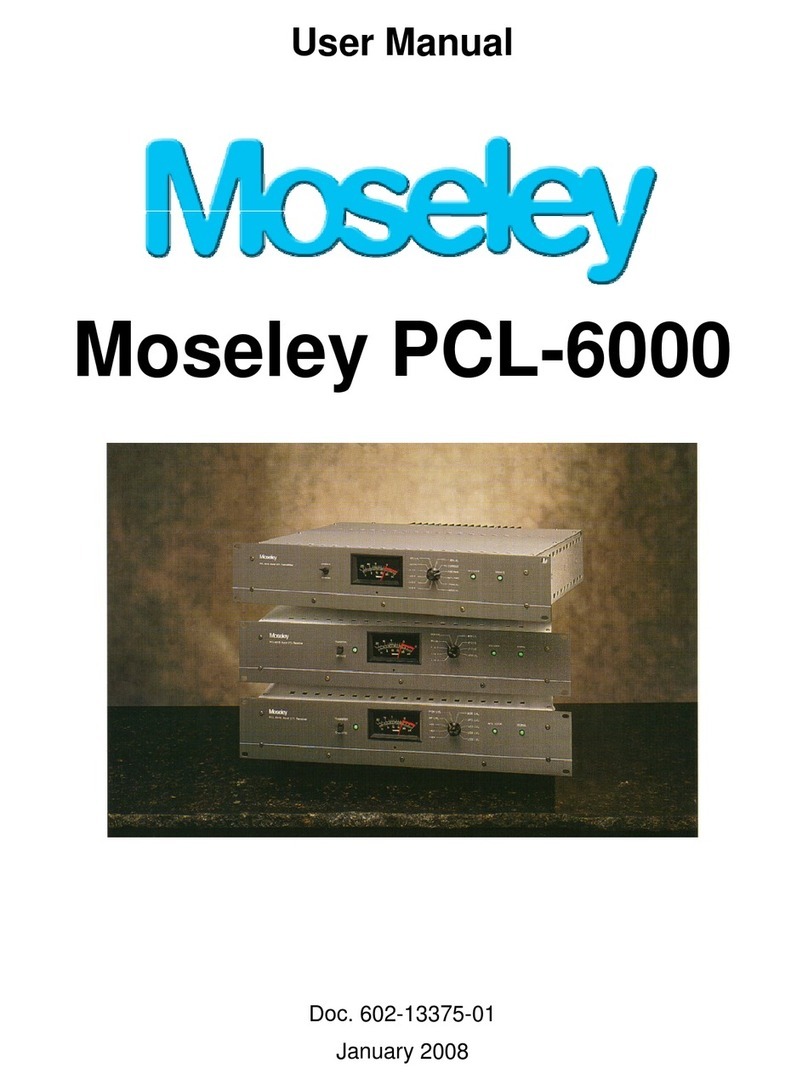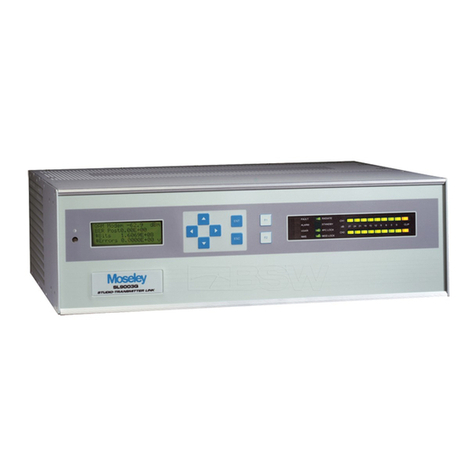
www.SteamPoweredRadio.Com
Table
of
Contents
v
List
of
Figures
Figure Title
1-1
DSP6000A Digital Studio-TransmitterLink (DSTL) System
1-2 DSP6000A Encoder Block and Level Diagram (92A1336 R: A)
1-3 DSP6000A Decoder Block and Level Diagram (92A1335 R: 1)
2-1
Transformer AC Wiring detail
2-2 Bench Test Setup for Encoder/Decoder Only
2-3 Bench Test Setup For Digital STL System
2-4 Encoder-to-STL Transmitter Interconnect
2-5 Decoder-to-STL Receiver Interconnect
2-6 Air-Chain Processing with the Digital STL
2-7 Digital Repeater Interconnection
2-8 Repeater Cable Detail
2-9 Fractional
T1
Network
2-10a DSP6000A
to
CSU (RS-449) Interconnection Cable
2-10b DSP6000A
to
CSU (EIA-530) Interconnection Cable
2-11 DSP6000Ato MRC1600/1620 Data Connections
2-12 ACIA Replacement Cable
2-13 DSP6000Ato MRC-1/2/2S Data Connections
2-14 DSP6000Ato MultiTech MT202TD Data Connections
2-15 Modification
of
Older PCL6020/6030 Audio/PS
for
Digital STL
Operation
2-16 Encoder-to-PCL606 Interconnection
2-17 Decoder-to-PCL606 Mono Receiver Interconnection
2-18 Encoder-to-PCL606/C Interconnection
2-
19
Decoder-to-PCL606 Receiver Composite Interconnection
2-20 Encoder-to-PCLS0S Composite Interconnection
2-21 Decoder-to-PCL505 Receiver Composite Interconnection
3-1 EncoderFrontPanel
3-2 Encoder Back Panel ·
3-3 STATUS Output (TTL
),
DB-15 F
3-4 INTERFACE
1/0
(RS-422A), DB-15 F
3-5
XLR
Sockets, IEC 268-14, Female
3-6 BNC Sockets, Female
3-7
DATA
1 Inp
ut
(RS-232), DB-9 F
3-8
DAT
A2.
Inp
ut
(RS-232), DB-9 F
3-9 Decoder Front Panel
3-10 Decoder Back Panel
3-11 STATUS Output (TTL), DB-15 F
3-12 INTERFACE
1/0
(RS-422A),
08-15
F
DSP6000A
602-11157-TC1
R:
A
Page
1-2
1-10a
1-12a
2-3
2-4
2-6
2-10
2-12
2-14
2-15
2-16
2-19
2-20
2-20
2-25
2-26
2-27
2-28
2-33
2-35
2-37
2-39
2-40
2-42
2-43
3-2
3-3
3-4
3-4
3-5
3-5
3-5
3-5
3-6
3-7
3-8
3-8
































